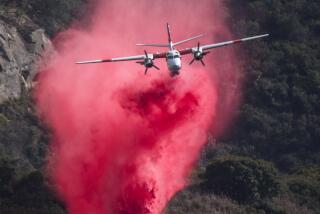Students Fly High on Math and Science
WARNER ROBINS, Ga. — As Jeremy Trotter eased back the throttle of the F-16, the nose of his fighter pushed effortlessly into the heavens and the Earth spiraled out of sight behind him.
“Hercules, set your heading to 1-8-0. That’s 1-8-0. Do you copy?” a voice crackled over the headset.
“Copy, Globemaster. Heading 1-8-0 degrees. Next stop, downtown Baghdad,” the pilot replies, punching the coordinates into a key pad inside the cockpit.
Jeremy Trotter is 13.
He is on a mission quest--an effort by the U.S. Air Force, the Warner Robins Museum of Aviation and the Houston County schools to have students test their math, science and communication skills by using state-of-the-art military flight simulators.
“Here, they get to see how the stuff they are learning in the classrooms can be used in everyday kind of jobs,” said Maj. Tim Ham, creator and coordinator of Mission Quest.
The program at the museum is free to central Georgia students. It is believed to be the only flying-related program in the country that gives aviation lesson plans to public school teachers.
Among them: How an airplane flies, the science of navigation, map and compass reading, and how to read weather patterns.
After weeks of classroom instruction, students learn from Air Force pilots, plan a humanitarian aid mission, put on flight suits and then spend a day behind the throttles of fighter-shaped simulators at the Museum of Aviation.
Computer software used at the Pentagon and not yet available to the public allows students to use aerial and satellite maps--the same ones used by the military--to plot their missions.
“The kids were so excited about this that I didn’t have any problems with keeping them on task. In fact, the biggest problem may have been trying to get them out of the simulators,” said Barbara Finley, whose 16 Bonaire Middle School honors students were test pilots for the program’s inaugural flight in December.
Sitting in the cockpit of a simulated C-130 cargo plane, 13-year-old Janelle Evans depends on a fellow student to direct her to Baghdad and on Jeremy to protect her from enemy aircraft.
“It’s not just about math and science. You have to realize you can’t do everything by yourself,” she says.
Four simulators are tied together in a network so students can work together to accomplish their mission, which is played out on four movie theater-sized screens.
By spring, there will be 12 simulators and screens interconnected at the museum. It is expected that 35 to 40 students--a full class, drawn from any one of 30 nearby middle schools--will be accommodated each day. The $1-million cost will come from donations and grants from the federal government, Ham said.
Future missions for other students will include search and rescue, aerial refueling, surveillance and reconnaissance, and weather tracking. Also planned for next year is a networked flight simulation with the U.S. Space Camp’s Aviation Challenge in Huntsville, Ala. Students in both programs would fly missions simultaneously, Ham said.
Although the program is set up to emphasize math and science skills, there is a definite military flavor. The scenario of the aid mission: A civil war has broken out in Iraq and President Saddam Hussein has been overthrown.
Wishful thinking? Maybe, Ham said.
The students fly from Wadi al-Khirra in southern Iraq to Baghdad. They deliver medicine and food and then land at Tikrit, Hussein’s birthplace, in northern Iraq.
Students also get an overview of Air Force history.
After their mission, Jeremy and Janelle say they want to fly real airplanes.
Elizabeth Garcia, the museum’s executive director, admits the program is good public relations for the community, but she denied it serves a military agenda.
“This is not a recruiting station, nor is it a fancy arcade,” she said.
More to Read
Sign up for The Wild
We’ll help you find the best places to hike, bike and run, as well as the perfect silent spots for meditation and yoga.
You may occasionally receive promotional content from the Los Angeles Times.






